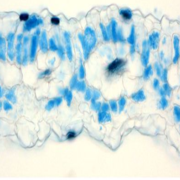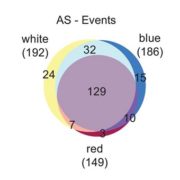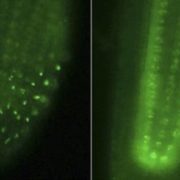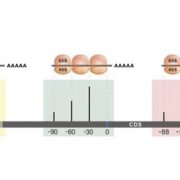
It was a Great, Green Year: Identification of a Chlorophyll Dephytylase That Functions in Chlorophyll Turnover
Research, The Plant Cell, The Plant Cell: In Brief0 Comments
/
IN BRIEF by Jennifer Mach [email protected]
Green may have been the Pantone Color of the Year for 2013 (http://www.pantone.com/color-of-the-year-2013), but 2016 was a great year for papers on chlorophyll research, at The Plant Cell and beyond. In this year, we saw a pile of interesting papers examining…

Best of 2016: Top Topics in The Plant Cell journal
Blog, Research, Research Blog, The Plant CellWe’ve highlighted some of the Plant Cell papers that were widely shared, liked, blogged, retweeted and otherwise garnered high-levels of attention this year. Perhaps you can use some holiday-season quiet time to catch up on those you missed.
Reviews and Perspectives
Creating order from chaos: epigenome…

The Power of Plasticity in Polyploid Persimmon
Research, The Plant Cell, The Plant Cell: In BriefIN BRIEF by Jennifer Lockhart [email protected]
Most plants are hermaphrodites, producing perfect flowers with both male and female functions. In roughly 6% of plants, however, male (usually XY) plants produce only male flowers and female (XX) plants produce only female flowers. These dioecious plants…

Metabolic Signaling Regulates Alternative Splicing during Photomorphogenesis
Research, The Plant Cell, The Plant Cell: In BriefIN BRIEF by Kathleen L. Farquharson [email protected]
Alternative splicing (AS) regulates gene expression and greatly expands the coding capacity of complex genomes. By regulating which elements of an mRNA transcript are removed or retained, AS produces multiple transcripts from a single gene. Some…

Do Phytochromes and Phytochrome-Interacting Factors Need to Interact?
Research, The Plant Cell, The Plant Cell: In BriefIN BRIEF by Nancy R. Hofmann [email protected]
A new study calls into question whether phytochrome B (phyB) must directly interact with phytochrome-interacting factors (PIFs) to promote light responses. Phytochrome photoreceptors mediate responses to red light in part by inducing the degradation of…

Recognizing featured Plant Cell first authors, November 2016
The Plant Cell, The Plant Cell: Author Profiles
Recently, we’ve been profiling first authors of Plant Cell papers that are selected for In Brief summaries. Here are the first-author profiles from the October issue of The Plant Cell.
Jaewook Kim, Kijong Song, and Eunae Park, featured authors of Epidermal Phytochrome B Inhibits Hypocotyl Negative…

EDITORIAL: The Plant Cell Begins Opt-in Publishing of Peer Review Reports
The Plant Cell, The Plant Cell: NewsAs of January 2017, The Plant Cell will offer authors the option of associating a Peer Review Report with each research article. Reviewer anonymity will be strictly maintained. The reports will include the major comments from reviewers and the editors’ decision letters along with the authors’ response…

RNA Degradome Studies Give Insights into Ribosome Dynamics
Research, The Plant Cell, The Plant Cell: In BriefIN BRIEF by Gregory Bertoni [email protected]
RNA metabolism is key to a number of crucial processes in the cell, including transcription, RNA splicing, translation, and gene regulation. For efficient translation, mature mRNAs must have a 7-methylguanosine cap on the 5′ end to help recruit the translation…

Recognizing featured Plant Cell first authors, October 2016
The Plant Cell, The Plant Cell: Author Profiles
Recently, we’ve been profiling first authors of Plant Cell papers that are selected for In Brief summaries. Here are the first-author profiles from the October issue of The Plant Cell.
Olivia Wilkins and Christoph Hafemeister, featured first authors of EGRINs (Environmental Gene Regulatory Influence…

